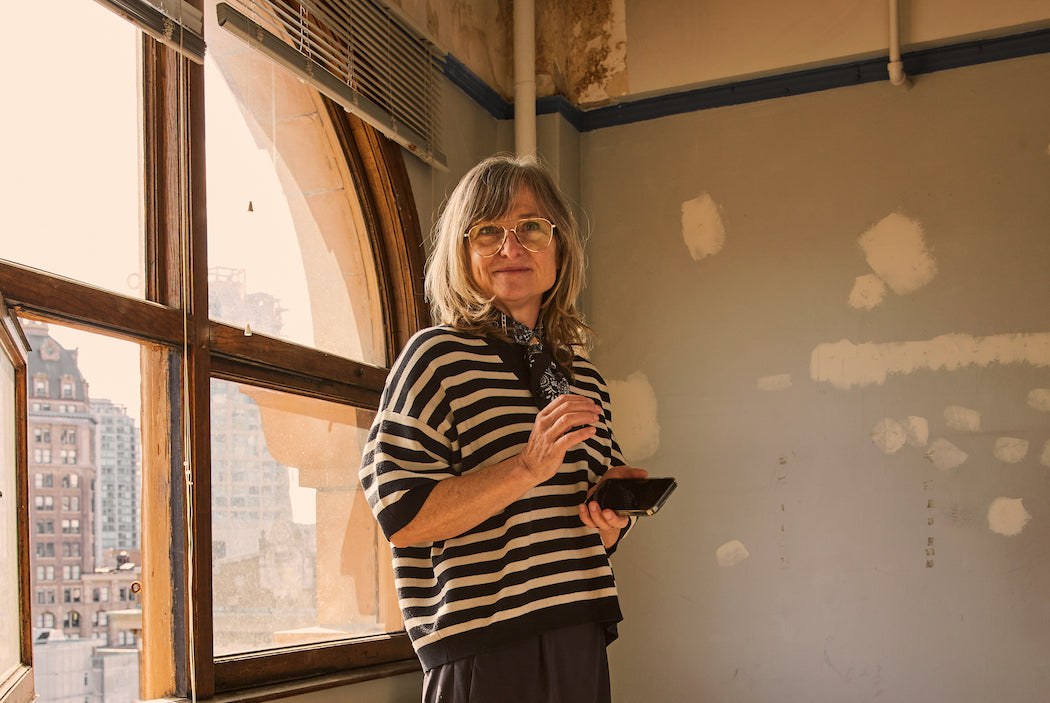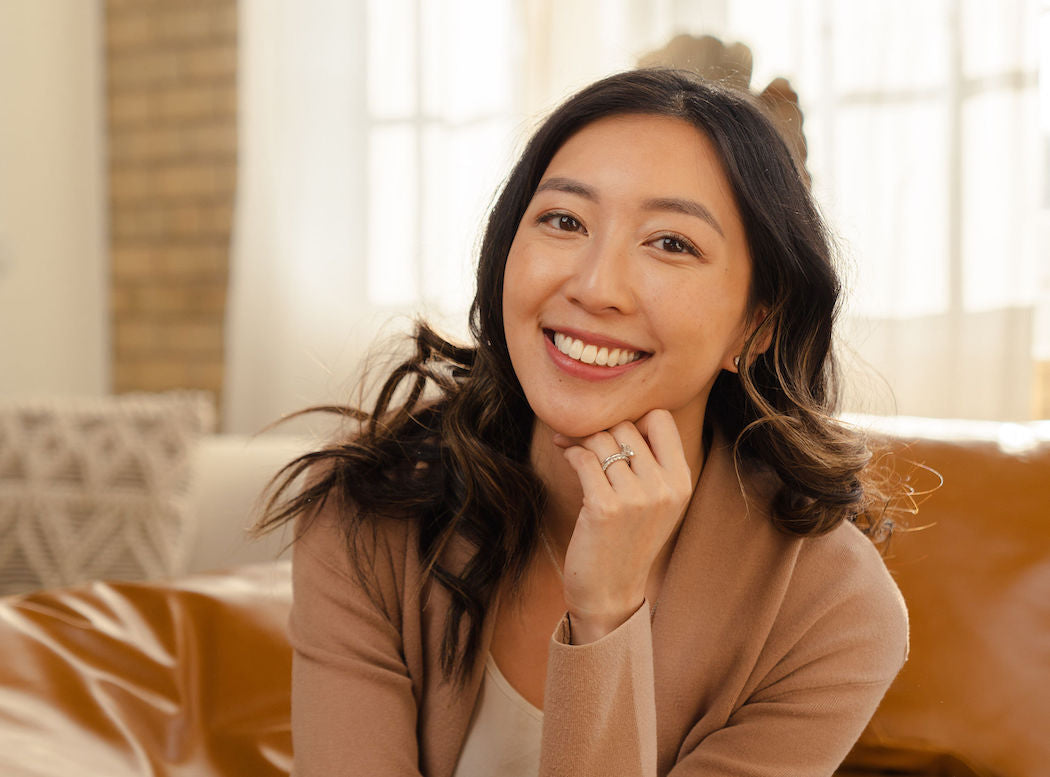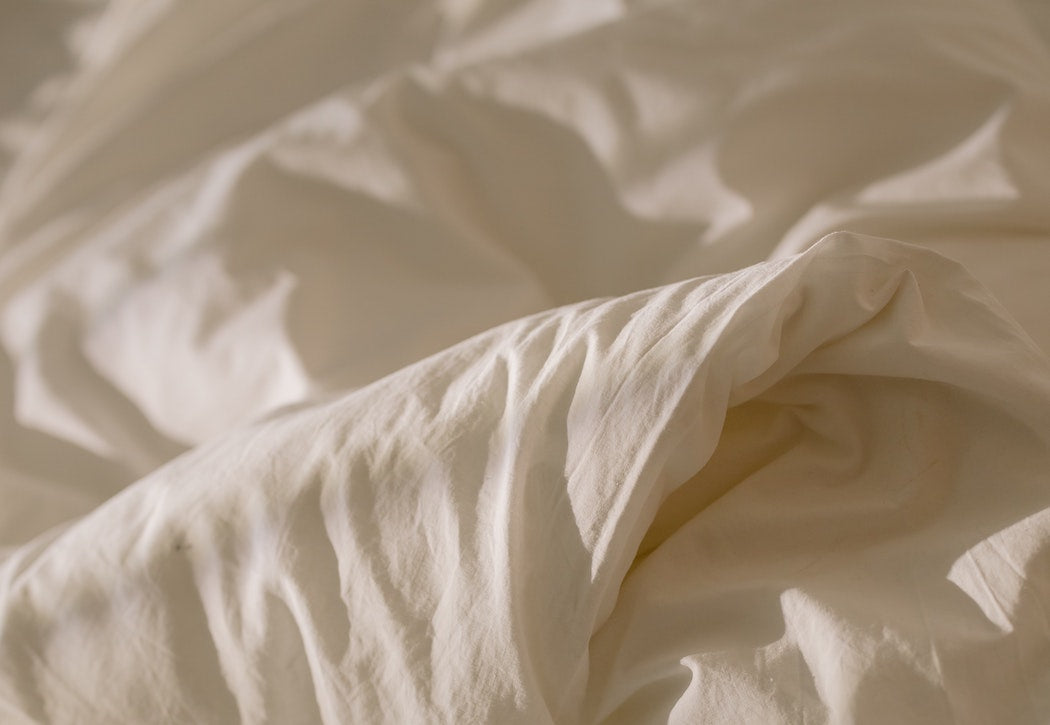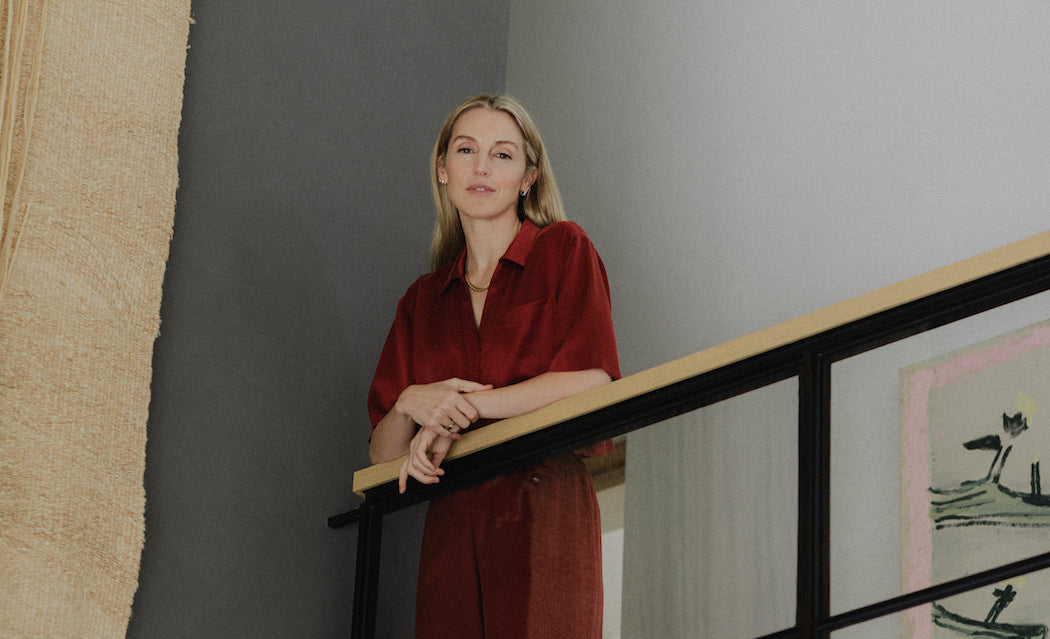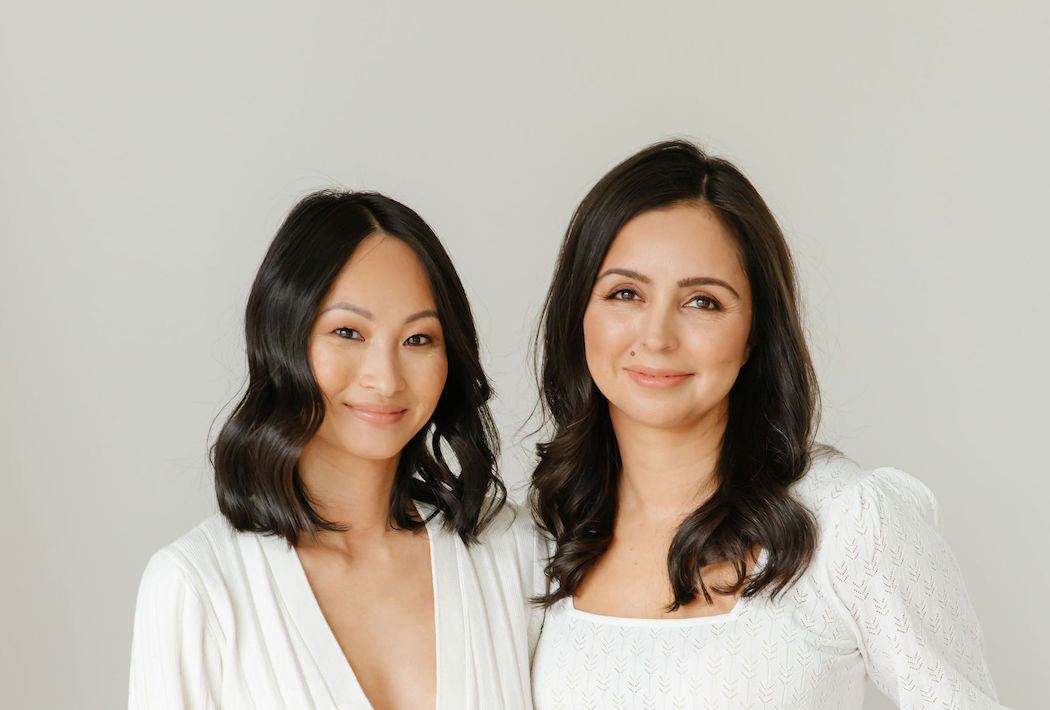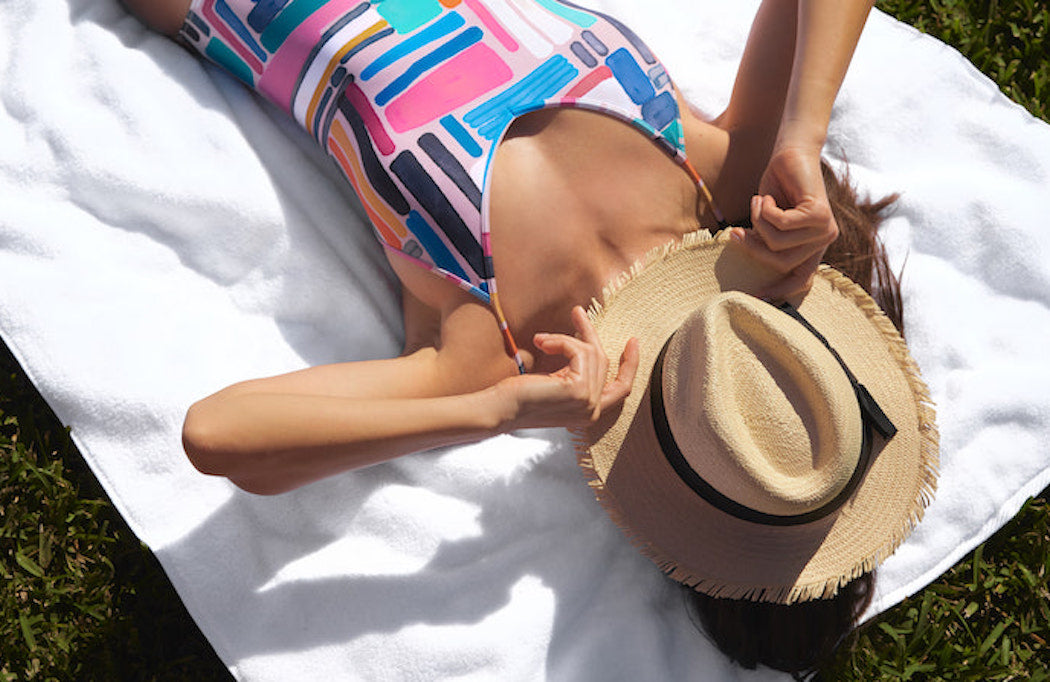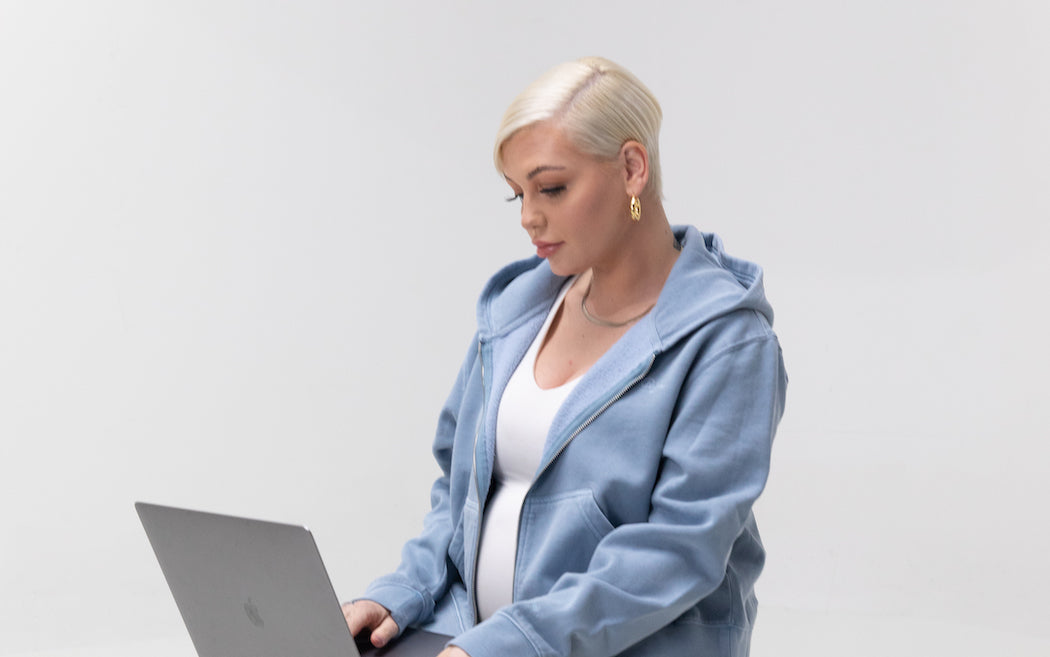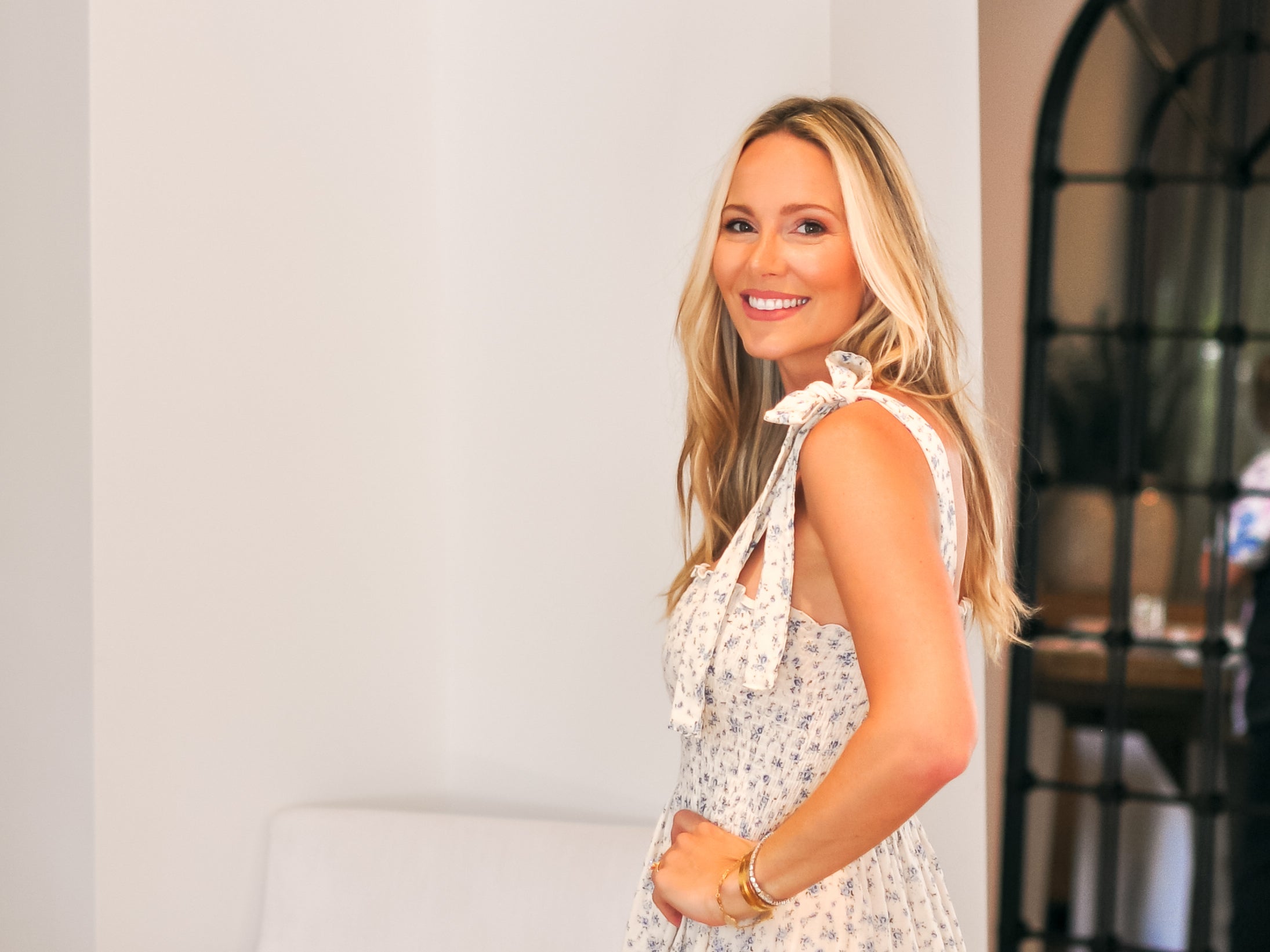Anjhe Mules is the picture of poise. She almost floats through the door into Field & Social in downtown Vancouver, her black pleated skirt swaying softly as she walks. The skirt is notable, as it’s from Lucas Hugh: the line of luxurious activewear that Mules co-founded in 2010. The skirt is one of her genius inventions; the flattering mesh number can be thrown on over leggings after a workout. As the brand’s creative director, Mules should certainly walk the walk—or in her case run the run, which she says is how she does some of her most important thinking.
Born in New Zealand and now based in London, Mules admits to being tech savvy, harbouring a love of supercars, and being fascinated by futurism. So it’s really no wonder Lucas Hugh was tapped to design costumes for The Hunger Games: Catching Fire, and that the brand is sold through innovative online retailer Net-a-Porter. Still, Mules is happily down-to-earth, a mother of two young kids who, she admits, have fallen in love with White Spot on this Vancouver visit (really, who wouldn’t be into Pirate Paks?). In between Ride Cycle Club classes and a pop-up at TurF, Mules sits down to discuss how she became so successful, and why activewear is such an exciting market.
How did Lucas Hugh come about?
I was designing for 10 years before I launched Lucas Hugh, swimwear mainly. I worked for Marc Jacobs and Alexander McQueen in London. But I saw an opportunity for a technical garment that combined fitness and fashion. Back then there was nothing; you could just buy menswear that was pink or purple. There was nothing cool to wear to the gym. I think my big moment was when I got locked out of my hotel room in Moscow and I was in my gym kit, and I had to go and get another key card. [The hotel] was really glamorous and I was feeling dishevelled. And I thought, “Why is there nothing cool for women to wear just around?” I spent two years doing research and development before we launched in 2010 and then we went straight into Net-a-Porter, and the business has grown since then. We’ve got our first retail store in London on King’s Road, which is really exciting.
What sets the brand apart?
I think Lucas Hugh’s special because we use Italian fabrics, it’s European-made—there’s a lot of craftsmanship that goes in with bonded seams, things like that, which is not common necessarily. We use technical taping and bright colours, but really the idea is that it’s going to be the unique piece that you’re wearing alongside any other activewear. Something a little bit more elevated.
Did you ever imagine you’d one day have your own activewear line?
When I was in my early twenties I had a swimwear brand as well, right out of university. So I always wanted to have my own brand. But I think this time around I approached it in a more considered way. I went away to work on a private jet in Moscow to save the money—random! It was really well paid, I was doing two weeks on and two weeks off, I was paid in cash. I was able to save the money and work at the same time. It was hard.
We were self-funded for the first few years. I had loans from friends and family as well which helped me along the way. But we didn’t take external funding for eight years; I think those eight years have been fundamental to the success of the product today, because we’ve had trial and testing all that time. And now a lot of activewear brands exist, but we had the chance to be slow and steady to get where we’ve got.
What is it about activewear in particular that you love?
I think activewear is so exciting. You think about all the technology that’s involved in the fabrics. Futurism is something that really excites me, so to put all of that together and then think about how women are going to dress in 80 years’ time, or maybe even less, what kind of clothing they’re going to need—that sort of stuff inspires me.
What else inspires you?
I think inspiration can come from anything. I’m definitely aware of what people are wearing. We don’t look at trends, I would say, because we’re looking at things that are timeless. But going for a run generates a lot of creative thought, so I would say for me personally that’s where I come up with most of my ideas. Going out and just clearing my head. It’s also about practicality. Things that you actually need, like pockets, reflective detailing, things that don’t chafe. I’m really aware of the fundamental basics that you need in clothing. Pockets are really important to me. I love to carry things in my pockets because I don’t like to carry bags. So practicality is a big thing. We’re resolving issues. That’s the other exciting thing about activewear: designing for purpose and function.
This interview has been edited and condensed.


